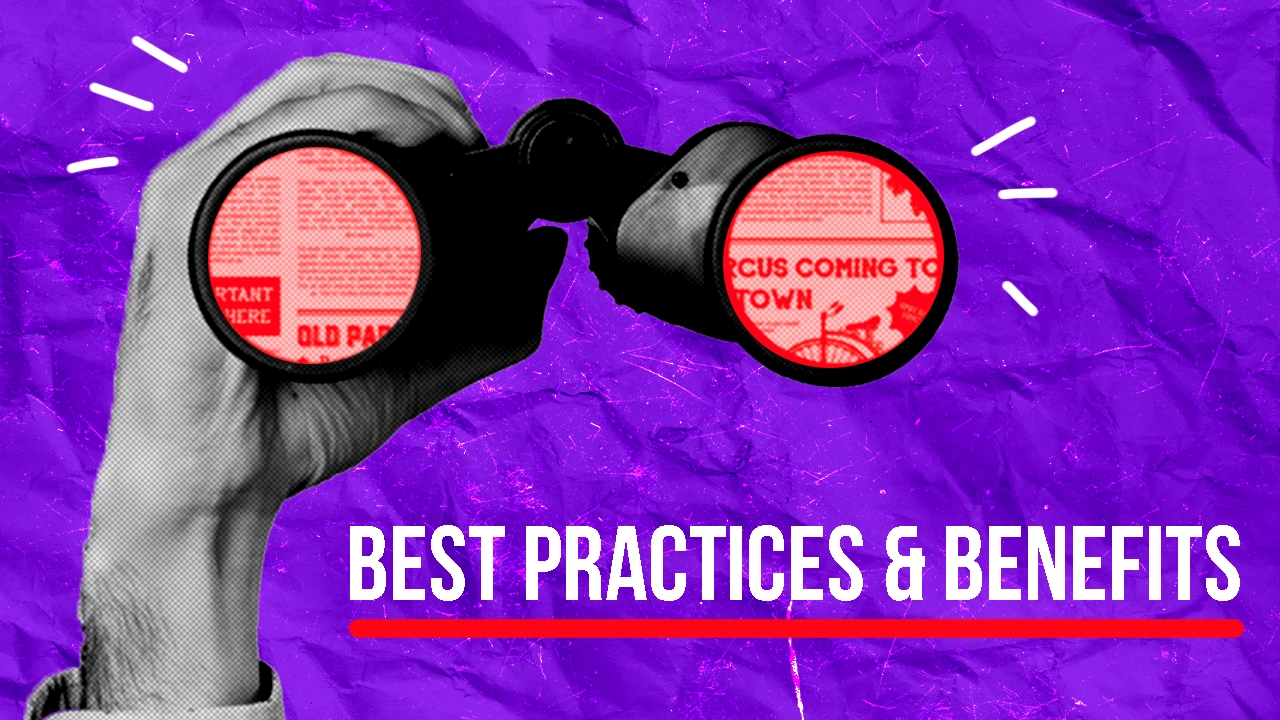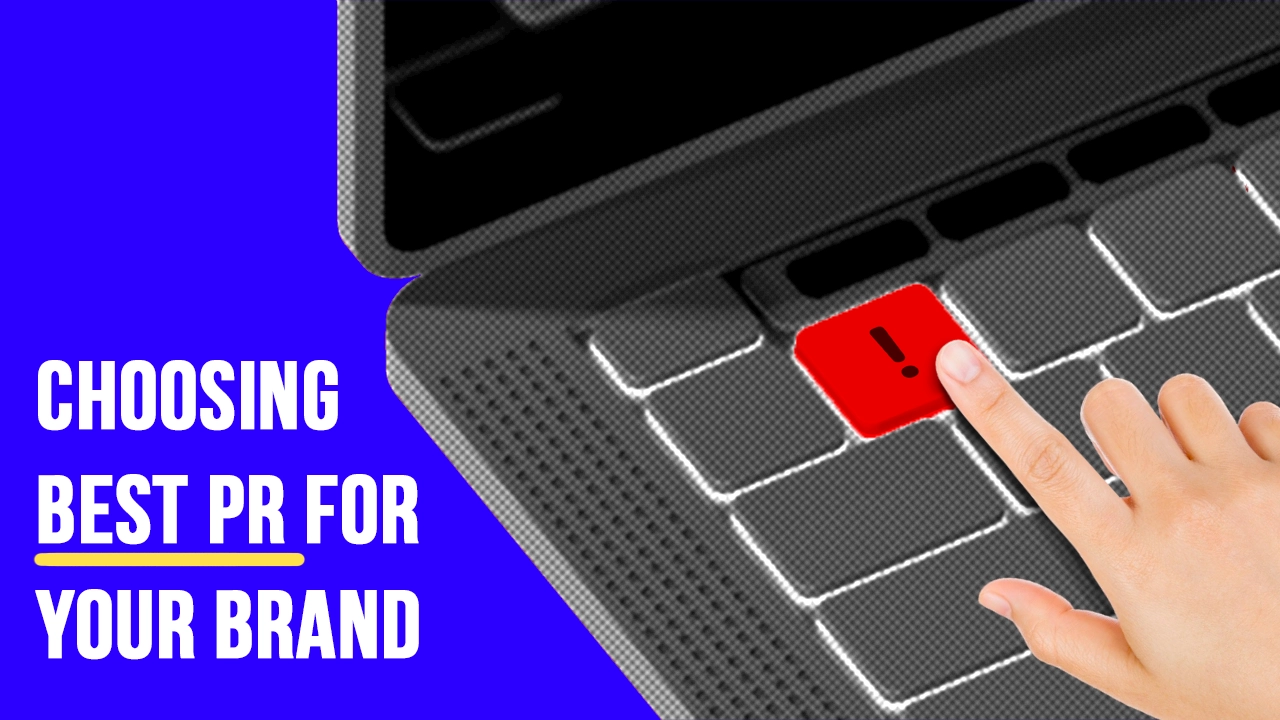Press releases have long been a staple in digital marketing and public relations. However, with Google’s ever-evolving search algorithms, the role of press releases in SEO has changed significantly.
In 2025, Google has introduced new policies that further regulate the use of press releases for SEO, aiming to reduce spammy practices and promote high-quality, authentic news distribution.
So, how do you ensure your press releases help your brand gain visibility without risking Google penalties? In this article, we’ll break down:
- Press releases no longer boost SEO through backlinks—focus on brand exposure instead.
- Avoid SEO mistakes like keyword stuffing, excessive links, and mass syndication.
- AI-generated press releases need human editing to meet Google’s quality standards.
- Google News optimization & structured data help press releases rank better.
- Earned media & journalist outreach are more effective than PR wire mass distribution.
- The future of press releases is in AI search, voice search, and authentic storytelling.
💡 Looking for expert press release distribution services? Contact GlobaWavePR.com to ensure your press releases reach the right audience while staying fully compliant with Google’s guidelines!
Table of Contents
Google’s Latest Guidelines on Press Releases (2025 Update)

As Google’s search algorithms continue to evolve, so do the rules for press releases and their impact on SEO. Over the years, Google has cracked down on manipulative link-building strategies, and in 2025, the guidelines have become even more stringent.
Press releases can still be a powerful tool for brand exposure, media coverage, and audience engagement—but only if used correctly. Google’s focus is now on authenticity, credibility, and value-driven content, meaning press releases should be crafted with the primary goal of informing, not manipulating search rankings.
Press Releases Are Not a Direct SEO Strategy Anymore
Historically, many businesses used press releases as a way to gain backlinks and boost search rankings. In 2025, however, Google’s algorithms treat press releases as promotional content rather than editorially-given links.
What Google Penalizes in Press Releases:
- Press releases stuffed with keyword-rich anchor text links for SEO manipulation.
- Mass-syndicated, duplicate press releases across multiple low-quality press release sites.
- AI-generated, low-quality content with little journalistic or informational value.
- Overuse of dofollow links, which Google considers an attempt to manipulate PageRank.
What Google Approves in Press Releases:
- Informative, well-written, and newsworthy content that provides real value.
- Press releases distributed through high-quality, authoritative platforms rather than spammy PR directories.
- No-follow or sponsored links to prevent link scheme penalties.
- Proper attributions and citations to ensure credibility.
Want your press release to get featured on premium media outlets and avoid SEO penalties? Work with a professional PR distribution service like GlobaWavePR.com for guaranteed high-authority exposure.
Do Press Releases Still Help SEO in 2025?
The big question on every marketer’s mind: Do press releases still contribute to SEO rankings in 2025?
The answer: Yes, but not in the traditional way. While press releases no longer directly boost SEO through link-building, they still play a vital role in brand visibility, authority, and organic discovery.
The Indirect SEO Benefits of Press Releases
Even though Google has devalued backlinks from press releases, they can still enhance SEO in the following ways:
- Boosts Brand Awareness & Authority – If your press release is picked up by high-authority news sites, your brand gains credibility, which can increase branded search queries (an important ranking factor).
- Improves Search Visibility in Google News – Google still ranks press releases in Google News and sometimes in Featured Snippets if they provide original, authoritative content.
- Drives Referral Traffic – While backlinks from press releases don’t pass SEO value, a well-placed press release on a major publication can drive real traffic to your website.
- Encourages Organic Backlinks – If journalists, bloggers, or influencers discover your press release and write about it on their own platforms, you can earn natural, editorially-given backlinks—which are extremely valuable for SEO.
What Makes a Press Release Rank Well in Google in 2025?
Google’s Search Generative Experience (SGE) and AI algorithms now prioritize the following factors when ranking press releases:
- E-E-A-T Compliance – Google gives higher visibility to press releases from brands with strong Expertise, Experience, Authoritativeness, and Trustworthiness (E-E-A-T).
- High-Quality, Original Content – Press releases that provide unique insights, newsworthy content, and avoid promotional fluff rank better.
- Google News Optimization – Structuring press releases with proper headlines, meta descriptions, and schema markup improves their chances of appearing in Google News results.
- Engagement Signals – If a press release gets shared widely on social media or gains traction through brand mentions, Google recognizes it as valuable content.
Important: If your press release is poorly optimized, generic, or solely focused on backlinks, it will not help your SEO efforts—and could even result in a Google penalty.
💡 Want your press release to be seen by journalists, industry influencers, and major news outlets? GlobaWavePR.com specializes in SEO-friendly press release writing and distribution that ensures real impact!
Common SEO Mistakes That Can Get You Penalized

Google’s search algorithms have become increasingly sophisticated in detecting manipulative tactics, and press releases are no exception. Many businesses still make critical SEO mistakes when using press releases, which can lead to penalties, ranking drops, and wasted PR efforts.
If you’re using press releases as part of your digital marketing strategy, avoid these common mistakes to stay compliant with Google’s guidelines in 2025.
The Biggest SEO Mistakes in Press Releases
1. Over-Optimized Anchor Text in Links
One of the biggest SEO mistakes businesses make in press releases is using exact-match keyword anchor text to link back to their website.
Example of bad practice:
“Our best digital marketing agency in New York is now offering new services” (linked to the homepage).
Why this is bad:
- Google identifies excessive keyword-stuffed anchor text as manipulative.
- It violates Google’s link scheme policies, leading to ranking penalties.
Solution:
- Use branded or natural anchor text instead of keyword stuffing.
- Apply nofollow or sponsored attributes to links to avoid Google penalties.
2. Mass Press Release Syndication on Low-Quality Sites
Many companies distribute the same press release across dozens of low-quality PR sites, hoping for widespread exposure and backlinks.
Why this is bad:
- Google considers this duplicate content, diluting your SEO value.
- Many low-authority PR sites are ignored by Google’s algorithms.
- Press releases that appear word-for-word on multiple sites don’t rank well.
Solution:
- Distribute press releases selectively to authoritative news sources instead of relying on mass distribution.
- Use unique headlines and summaries when submitting to different outlets.
- Focus on earned media coverage—getting real journalists to write about your news.
3. AI-Generated Press Releases Without Human Review
With the rise of AI writing tools like ChatGPT and Google Bard, many businesses are now automating press release writing. However, Google’s AI-detection algorithms are becoming stricter, and low-quality AI-generated press releases can be penalized.
Why this is bad:
- AI-generated content often lacks originality and depth.
- Google’s 2025 update prioritizes human expertise (E-E-A-T) over auto-generated content.
- Press releases filled with repetitive phrasing and generic information won’t rank well.
Solution:
- Use AI tools to assist writing but always have human oversight.
- Ensure fact-checking, personalization, and editorial quality control.
- Avoid publishing fully automated press releases without edits.
4. Excessive Use of Dofollow Links
Another common mistake is adding multiple dofollow links in a press release, hoping to pass SEO value to their website.
Why this is bad:
- Google flags dofollow links in press releases as unnatural link-building.
- Too many dofollow links can result in Google penalties or manual actions.
Solution:
- Use “nofollow” or “sponsored” attributes for all press release links.
- Limit the number of links (one or two maximum per release).
- Prioritize earned backlinks (from journalists covering your story) instead of relying on press release links.
How to Write a Google-Compliant Press Release in 2025

Writing a Google-friendly press release is not just about avoiding penalties—it’s about ensuring your content is valuable, engaging, and newsworthy. Follow these steps to craft a high-quality press release that aligns with Google’s best practices.
Step-by-Step Guide to Writing a Press Release That Ranks
Step 1: Start with a Strong, Newsworthy Headline
Your headline is the first thing journalists, readers, and search engines see. It should be clear, compelling, and keyword-optimized without being clickbait.
Best Practices:
- Keep it short and attention-grabbing (under 70 characters).
- Include a relevant keyword naturally.
- Use action words to engage readers.
Example of an optimized press release headline:
“Google Updates SEO Guidelines for Press Releases in 2025: What Marketers Need to Know”
Example of a bad headline:
“Best SEO Practices | Press Releases 2025 | Top Marketing Strategies” (Keyword stuffing and unnatural formatting).
Step 2: Write an Engaging Lead Paragraph
Your first paragraph should answer the key journalistic questions: Who, What, When, Where, Why, and How?
Example of an effective opening paragraph:
“Google has rolled out new SEO guidelines for press releases in 2025, changing the way brands use press releases for online visibility. According to Google’s latest updates, press releases should prioritize journalistic value over SEO-driven link-building. This update affects businesses that rely on press releases for search rankings and requires a shift in strategy to remain compliant.”
Why this works:
- It provides immediate value (Google’s new SEO guidelines).
- It sets the tone for what the article will cover.
- It avoids overly promotional language.
Step 3: Keep the Press Release Concise and Scannable
Press releases should be between 400-800 words for maximum impact and readability.
Best Formatting Tips:
- Use short paragraphs (2-3 sentences max).
- Incorporate bullet points and subheadings.
- Write in a clear, journalistic tone (avoid excessive marketing language).
Step 4: Use SEO-Friendly Linking Strategies
To comply with Google’s guidelines:
- Use only 1-2 relevant links (to your homepage or product page).
- Apply “nofollow” or “sponsored” attributes to prevent penalties.
- Avoid linking to the same page multiple times within the press release.
Example of a natural, SEO-friendly link:
“For expert press release distribution and compliance with Google’s latest SEO updates, visit GlobaWavePR.com to learn more.”
Step 5: End with a Strong CTA & Contact Information
Every press release should include a clear call to action (CTA) directing readers to the next step.
Example of a strong CTA:
“Want to distribute your press release on high-authority media outlets? Contact GlobaWavePR.com today for expert press release writing and distribution.”
Finally, always include media contact details:
Press Contact:
Email: marketing.globalwave1@gmail.com
Website: globalwavepr.com
Location: Bangalore, India
Pro Tip: Journalists prefer press releases with clear contact details, so make sure to include relevant PR or media relations info!
AI-Generated Press Releases: Google’s Latest Stance

The rise of AI-generated content has transformed the way businesses create press releases. Tools like ChatGPT, Google Bard, and Jasper AI allow companies to generate press releases in minutes. However, Google’s AI and search algorithms in 2025 have become more advanced in detecting AI-generated content, and not all AI-created press releases pass Google’s quality standards.
Google’s Search Quality Rater Guidelines (SQRG) and its Helpful Content Update emphasize human expertise, originality, and credibility. So, while AI can assist in press release writing, it should not replace human oversight and journalistic integrity.
Can AI-Generated Press Releases Hurt SEO?
Google has clearly stated that AI-generated content is not inherently bad, but press releases that are solely written by AI without human input may be flagged as low-quality or spammy.
SEO Risks of AI-Generated Press Releases:
• Repetitive and Generic Content: AI tools tend to produce formulaic and predictable writing, which Google may devalue.
• Lack of Human Expertise: Google’s E-E-A-T guidelines (Experience, Expertise, Authoritativeness, Trustworthiness) favor content written or reviewed by industry professionals.
• Keyword Overuse: AI-generated text often over-optimizes keywords, leading to potential penalties.
• Duplicate Content Risks: If multiple companies use the same AI models and templates, their press releases may appear too similar, reducing ranking potential.
How to Use AI in Press Release Writing Without Getting Penalized
- Human Review & Editing is Mandatory – Never publish AI-generated press releases without fact-checking and editorial oversight.
- Add Unique Insights & Expert Quotes – Include original data, expert commentary, or company insights to make the press release stand out.
- Avoid Overuse of Keywords & Repetitive Phrasing – Ensure natural language flow and avoid keyword stuffing.
- Structure Properly for Readability – AI tends to generate long paragraphs; break them into concise, easy-to-read sections.
💡 Pro Tip: Use AI to speed up writing, but ensure final editing is done by an experienced PR professional. Need expert press release writing? GlobaWavePR.com can craft Google-friendly, human-optimized press releases that rank well!
The Right Way to Distribute Press Releases Without Getting Penalized

Once your press release is written, the next challenge is distribution. Where and how you distribute your press release plays a crucial role in SEO impact, brand exposure, and media pickup.
Many businesses make the mistake of mass-submitting press releases to low-quality PR sites, thinking that the more places a press release appears, the better. However, Google’s 2025 updates have cracked down on spammy syndication, and businesses now need a targeted, strategic distribution approach.
What Not to Do When Distributing Press Releases
Mass Syndication to Low-Authority PR Websites
- Submitting to hundreds of generic PR directories can harm SEO rather than help.
- Google deprioritizes content that appears word-for-word across multiple low-quality sites.
Over-Reliance on Press Releases for Link Building
- Some companies distribute press releases solely for the sake of backlinks, which violates Google’s Link Scheme Guidelines.
- Instead of dofollow backlinks, focus on earning organic mentions from journalists and bloggers.
Ignoring Google News Optimization
- Google prioritizes press releases optimized for Google News, but not all PR platforms syndicate to Google News.
- Many businesses fail to format their press releases correctly for News SEO visibility.
The Best Strategies for Press Release Distribution in 2025
Targeted Distribution to High-Authority News Platforms
• Instead of mass distribution, submit press releases to high-traffic media sites, industry publications, and niche news outlets.
Google News & Featured Snippet Optimization
To increase visibility in Google News, format your press release as follows:
- Use concise, news-style headlines (under 70 characters).
- Include a dateline with location & date.
- Structure content with short paragraphs & bullet points.
- Use relevant keywords naturally, but avoid over-optimization.
- Optimize the meta description (under 160 characters).
Pitching to Journalists & Industry Bloggers
- Instead of only relying on press release platforms, directly pitch your news to relevant journalists.
- Use HARO (Help A Reporter Out) and industry-specific journalist networks to gain earned media coverage.
Integrate Press Releases with Social Media & Digital PR
- Share the press release via LinkedIn, Twitter, and relevant business groups.
- Tag journalists or influencers who may be interested in covering the story.
- Use branded hashtags and encourage engagement to boost visibility.
Use Structured Data (Schema Markup) for SEO
- Add “NewsArticle” schema markup to your press release page.
- This helps Google recognize your press release as newsworthy content, improving search rankings and rich snippet visibility.
Pro Tip: Press release distribution should be strategic, not spammy. Want your press release to get picked up by top-tier media outlets? GlobaWavePR.com offers premium PR distribution services to maximize your brand’s visibility!
Real Case Study: A Website Penalized for Press Release SEO Mistakes
Nothing explains the impact of Google’s updated press release guidelines better than a real-world case study. Many businesses unknowingly violate SEO best practices when using press releases, leading to search ranking penalties. Here’s an example of a company that faced Google’s wrath due to poor press release practices—and how they recovered.
The Company: A Tech Startup Looking for PR Exposure
- A technology startup launched a new AI-driven CRM software and wanted to boost their online presence quickly.
- Their marketing team relied heavily on press releases for backlinks and brand awareness.
What They Did Wrong
1. Excessive Keyword-Optimized Links
- Their press releases contained multiple exact-match anchor text links pointing to their product pages.
- Google flagged this as manipulative link-building.
2. Spammy Press Release Syndication
- The startup submitted the same press release to 50+ low-quality PR sites.
- Google’s duplicate content detection reduced the visibility of all syndicated versions.
3. AI-Generated, Low-Quality Content
- Their team used AI tools to generate press releases, but didn’t fact-check or edit the content.
- This led to generic, low-value content, violating Google’s Helpful Content Update.
4. Lack of Earned Media & Journalistic Engagement
- They focused only on PR wire services instead of reaching out to journalists, bloggers, or influencers.
- No legitimate media outlets picked up their news, reducing the credibility of their PR efforts.
The Consequences: Google’s SEO Penalty
- Search Visibility Declined: Their website dropped in rankings for major keywords.
- Traffic Decreased by 40%: Google ignored most of their press release backlinks, reducing referral traffic.
- Press Releases Removed from Google News: Their syndicated press releases failed to rank due to low quality and duplicate content issues.
How They Recovered & What They Learned
Removed Spammy Links & Used Nofollow/Sponsored Tags
• They removed over-optimized anchor text and applied “nofollow” attributes to links in future press releases.
Targeted High-Quality PR Distribution
• Instead of mass syndication, they submitted press releases only to premium platforms (PR Newswire, Business Wire, and Google News-approved sites).
Implemented Google News & Structured Data Optimization
• Reformatted press releases to follow Google News guidelines (short, scannable paragraphs, proper metadata).
• Added structured data (Schema Markup: NewsArticle format) for better Google News indexing.
Used a Hybrid PR Strategy: Press Releases + Earned Media
• They pitched their story directly to journalists and got coverage in TechCrunch & Forbes, leading to organic backlinks.
• This increased credibility and SEO value, leading to higher brand trust & rankings.
Key Takeaway: Press releases should support SEO—not manipulate it. Follow Google’s best practices and use a PR strategy that focuses on high-quality, natural exposure rather than aggressive link-building.
Need expert guidance to avoid PR mistakes? Let GlobaWavePR.com handle your press release strategy with a Google-compliant, high-impact approach!
Advanced Press Release Strategies That Work Today

To stay ahead in 2025’s SEO and PR landscape, you need more than just a basic press release strategy. Here are advanced tactics that ensure maximum exposure, search visibility, and media engagement.
Use Digital PR & Press Releases Together
Rather than relying solely on traditional press releases, brands should combine Digital PR strategies to boost credibility.
Effective Digital PR Tactics:
- Guest Contributions & Thought Leadership Articles – Publish expert content on Forbes, Inc., Entrepreneur, and industry blogs.
- Influencer Collaboration – Work with relevant influencers to amplify press release reach.
- Brand Mentions & HARO (Help A Reporter Out) – Get featured in media stories without needing backlinks.
Optimizing Press Releases for Google Discover & News
Google News and Google Discover prioritize high-quality press releases with proper optimization.
Google News Optimization Checklist:
- Headline under 70 characters with a clear, newsworthy topic.
- Subheadings that summarize key points for better scanning.
- Short paragraphs (2-3 sentences max) to enhance readability.
- Use structured data (Schema Markup: NewsArticle format).
Press releases properly optimized for Google News can rank in Discover feeds, driving organic traffic!
Leveraging Multimedia (Images, Videos, & Infographics)
- Press releases that include high-quality images, infographics, or videos tend to rank higher and receive more engagement.
- Google prioritizes multimedia content, increasing the chances of getting featured in Google News & search results.
📌 Best Practices for Multimedia in Press Releases:
- Include at least one high-resolution image with descriptive alt text.
- Use YouTube-hosted videos for better search visibility.
- Add interactive elements (GIFs, motion graphics) to enhance engagement.
Structured Data & Schema Markup for Press Releases
Using Structured Data (Schema Markup) is an advanced SEO tactic that can improve press release rankings in search engines.
How Schema Markup Enhances Press Release SEO
- NewsArticle Schema: Helps Google recognize your press release as news content.
- Organization Schema: Ensures brand mentions appear correctly in Knowledge Panels.
- FAQ Schema: Improves search result visibility by answering common questions within search results.
Want to ensure your press release is Google News-friendly? GlobaWavePR.com can optimize your PR content with structured data for better rankings!
Frequently Asked Questions (FAQs) About Google’s Guidelines for Press Releases & SEO in 2025
1. Do press releases still help with SEO in 2025?
Yes, but not in the traditional way. Google has devalued backlinks from press releases, so they no longer pass direct SEO value. However, press releases can boost brand visibility, increase referral traffic, and help with Google News rankings when optimized correctly.
2. How many links should I include in a press release?
Google advises limiting press releases to one or two relevant links (such as a homepage or landing page) and using nofollow or sponsored attributes to avoid ranking penalties.
3. What are the biggest SEO mistakes in press releases?
• Over-optimized anchor text (e.g., using keyword-rich links excessively).
• Mass syndication to low-quality PR sites, causing duplicate content issues.
• AI-generated press releases without human oversight, which can trigger Google’s spam filters.
• Publishing press releases solely for link-building, which is considered manipulative by Google.
4. Can I use AI to write press releases?
Yes, but with caution. Google does not penalize AI-generated content if it provides value and is fact-checked. However, fully automated, low-quality AI-generated press releases can be flagged as spam.
5. How can I distribute a press release without getting penalized?
• Use high-quality PR distribution platforms like PR Newswire, Business Wire, and GlobeNewswire.
• Optimize for Google News by using structured formatting and relevant keywords.
• Engage with journalists and media outlets directly instead of relying solely on PR wire services.
• Promote your press release via social media and influencer partnerships for additional exposure.
6. How do I optimize my press release for Google News?
• Write a concise, newsworthy headline under 70 characters.
• Use a structured format with subheadings and bullet points for easy scanning.
• Include a dateline (location and date) in the first paragraph.
• Use schema markup (NewsArticle structured data) to help Google recognize your press release as news content.
7. Can press releases improve my brand’s online authority?
Yes! While press releases may not directly boost rankings, being featured in high-authority media outlets improves brand credibility, trust, and online reputation, which can indirectly benefit SEO.
8. Should I include multimedia (images & videos) in my press release?
Absolutely! Google prioritizes content with multimedia. High-quality images, infographics, and videos increase engagement and make your press release more shareable.
9. What is the future of press releases and SEO in the AI era?
• Google’s AI-driven search (SGE) will prioritize fact-based, authoritative news over promotional content.
• Voice search optimization will become more important for press releases.
• Brand mentions and reputation will outweigh backlinks as ranking factors.
• Authenticity, credibility, and structured data will play a bigger role in press release SEO.
The Future of Press Releases & SEO in Google’s AI-Driven Search
With Google’s AI-powered Search Generative Experience (SGE) becoming the new standard, press releases must evolve:
- Voice Search & AI Assistants – Press releases should be optimized for conversational search queries.
- AI Summarization & Google Discover – Google’s AI summarizes content, so clear & concise PR formats are necessary.
- Increased Focus on Brand Authority – PR success depends more on credibility, rather than backlinks.
Final Thoughts:
- Follow Google’s latest guidelines.
- Prioritize authentic, well-written press releases.
- Use targeted, high-authority PR distribution instead of mass syndication.
- Work with experts like GlobaWavePR.com to ensure compliance & visibility.
Ready to launch a high-impact, Google-approved press release? Partner with GlobaWavePR.com today!









